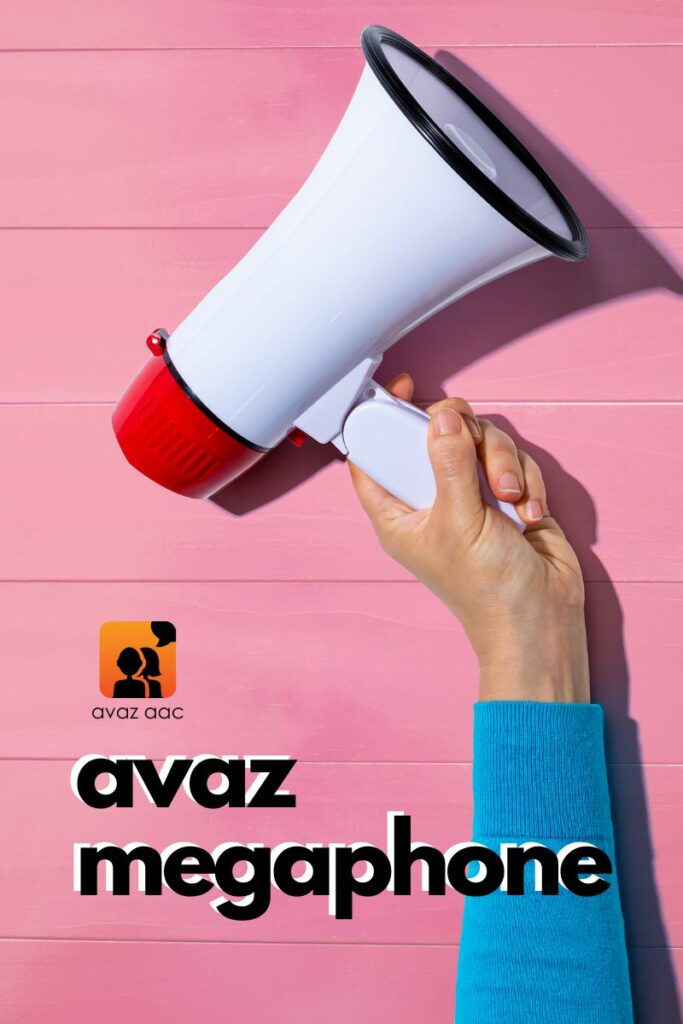

An Avaz Megaphone Feature
Adolescence & puberty are intense experiences in any child’s life. The changes in the body lead to many strong emotions. The accompanying hormonal changes only magnify all these feelings. When these emotions are not communicated or do not find a healthy outlet, the child is miserable. In the case of children who are non verbal, this phase may become even more harrowing.
In this short story, Aditi draws a tender portrait of the pain and angst of an autistic adolescent going through puberty. She faces difficulties in communication. Through this teenager’s tale, she highlights how communication can prove to be beneficial during this crucial phase of life.
The Parenthood Roller Coaster
Latha was deep in thought. Parenting the twelve year old Shruti had been quite the roller coaster ride so far. Much like other young parents, autism was not on the list of aspirations that Latha and her husband Arvind had for their precious child. But destiny had its own plans.
Latha still remembered the time when Shruti was two. As a baby, Shruti would not make eye contact with anybody – not even with Latha and Arvind. She seemed content and happy in her own world. Shruti loved lining up her envious collection of cars while enjoying a vantage view of the leaves on trees dancing merrily in the breeze. Even at that young age she hated it when people tried to have a conversation with her. She would shut her ears and start screaming when that happened! And she couldn’t talk, not even If her life depended upon it!
Soon, she was diagnosed with autism. And thus began the family’s journey with speech therapy, occupational therapy and every other conceivable therapy in the space. In about a year Shruti picked up the ability to make speech sounds and even started to say a few words .
Latha and Arvind were very relieved. Their daughter, thankfully, did not belong to the forty percent of the autistic population that never picked up the ability to speak.
The Communication Gap
Shruti had come a long way in some ways. In some other ways, she still had many miles to go…
No matter what they tried, Shruti did not learn to talk the way people usually did i.e. talk to communicate. Over a period of two years, she picked up the ability to speak about two hundred words. But things were clearly amiss. For one, she just repeated what others told her, pretty much like a parrot! The therapists even had a complicated sounding word for it – echolalia. But it was supposed to be a good thing – a way for autistics to learn and assimilate.
With age, the gap between what Shruti wanted to communicate and what she could actually communicate kept on increasing. She could talk, but most of it was not relevant to the conversation or the context. While she could not give meaningful responses to questions asked, she would keep talking to herself all day.
Things usually got worse when Shruti would come down with a bout of sickness. No matter how much Latha or Arvind or even the doctor tried, they could never get her to meaningfully respond to the question, “What is bothering you?”
Schooling Blues
School was a big disaster. Between Shruti’s sensory issues, the mountainous task of finding shadow teachers and valiant attempts to keep her in the mainstream, they ended up changing schools every single year. The one common theme that existed through the string of schools was Shruti’s inability to adapt or relate to her peers. And more importantly, the inability to communicate why she felt restless! Latha’s only solace through it all was that Shruti did not belong to the forty percent group that would never pick up the ability to talk!
The Dreaded Phase
Then came the monstrous ‘P’ phase that other parents had warned Latha about – puberty. And the phase lived up to its description and did not disappoint one bit! Shruti’s ‘behaviours’ shot through the roof. All attempts at getting Shruti to express what was wrong were failing remarkably.
Latha and Arvind became very frustrated. They were desperate to figure out what was bothering Shruti, so that they could find out a way to help her. Wasn’t that supposed to be relatively easy, considering that Shruti did not belong to the forty percent that never talk? Alas, it was not!
“Maybe we should take her back to the speech therapist”, remarked Arvind, snapping Latha out of her reverie. “Shruti probably needs more help to learn to communicate better”.
Trying Something Different
Sure enough, Latha and Arvind took Shruti back to Chatty Cathy Speech Therapy after six long years. Anusha, the director of the centre, had a conversation with Latha and Arvind to understand their concerns. She decided to assess Shruti.
“I understand where your concerns are coming from”, said Anusha, after assessing Shruti. “I think it is time to introduce Shruti to an alternative mode of communication. A text to speech app on the iPad would be a good option since Shruti has good literacy skills.”
“But why?”, exclaimed a surprised Latha, “Aren’t those apps supposed to be for those autistics who can’t talk? Shruti can talk!”


“Here is the thing”, explained Anusha, “Autism is a communication disorder. Many a times, especially when they are upset or anxious or disturbed, they find it difficult to verbally express what is bothering them. Think of it like this- you have just learnt how to speak in Hindi and you have been asked to speak to a group of people in a public event, in Hindi. How would you feel? Tongue tied? Nervous? You may even end up using a lot of English words in between. But if you had to deliver the same speech in English, you would do a great job! It is something like that …”
“But, what if Shruti stops talking because it is easier for her to type and communicate?”, asked a concerned Arvind.
“Speech is not a switch that you turn on and turn off, so trust me that is not going to happen’” said Anusha. “We use so much of text in a day – mails, chats, networking sites and what not. But have we stopped talking?”
Latha and Arvind were not convinced. “Give us some time to think and get back”, said Latha as they rose to leave.
Let’s Do This
After heading back home, Arvind looked up the Internet for information about using AAC apps for autistic children who could speak. He realized that there were people who had succeeded in similar situations like the one they were in, by introducing AAC to their child.
“May be we should give this a shot”, said Arvind. “In any case, typing is a good skill to have. It is something that Shruti could learn while using this app. Let us try using it only at times that she is upset or angry or restless. Perhaps she will be be able to communicate the reason for it.”
Latha and Arvind took Shruti back to Chatty Cathy and began her learning sessions on using the AAC app. With time and practice, Shruti developed the skills to navigate and use the app.
A Break in the Clouds
It was six months since Shruti had begun her sessions at Chatty Cathy.
Shruti was having a terrible day. She was feeling restless and was unable to sit down or focus. And all of a sudden, she started to cry loudly. It was something that Latha had noticed would happen to Shruti at certain times of the month. Latha slowly brought Shruti’s iPad and loaded the AAC app.
“What happened?”, asked Latha. “Why are you crying?”
Shruthi started bellowing even louder.
“Can you type and tell me Shruti?” asked Latha in a calm tone. “Amma would not know what it is unless you tell me.”
Shruthi took the iPad from Latha and started to rock. After a couple of minutes she typed, “I feel hot and flushed. My tummy hurts and I want to puke but I am not able to puke!”
Then it dawned upon Latha. Shruti was having a severe case of PMS, something that Latha herself used to have when she was younger. It used to be so debilitating that she would just want to curl up in her bed! Poor Shruti – she did not have a way to express this all along! That about explained the restless behaviors!
Latha immediately turned the fan on and gave some antacids to Shruthi. After a while, Shruthi felt better and she calmed down.
Giving Shruthi an alternative way to express herself turned out to be a good decision after all!
Avaz Megaphone is a platform for neurodivergent individuals to express themselves through the written word. We accept opinion pieces, short stories and poetry. Authors of accepted works will receive an honorarium. To make a submission please email us on: collaborate@avazapp.com
WRITTEN BY
Aditi Sowmyanarayan
Student & Writer
Aditi Sowmyanarayan is an eighteen year old who uses Avaz, a text to speech app, to communicate. She goes to Ishanya India Foundation, a special school in Bengaluru. Aditi is an avid blogger and an aspiring writer. She blogs on www.smallstepbigthought.blogspot.com
She can be reached on Instagram at writeaditi and on her Facebook page : small step big thought






Very nicely and aptly written. Being a mother of 11 year old sweet girl , going through the same phase . But like Aditi she can’t type so well . She is more into pictures in Avaz App . Hope the communication through pic help her .
Wow Aditi. Lovely narrative.
You had me hooked on till the end. Well done dear.